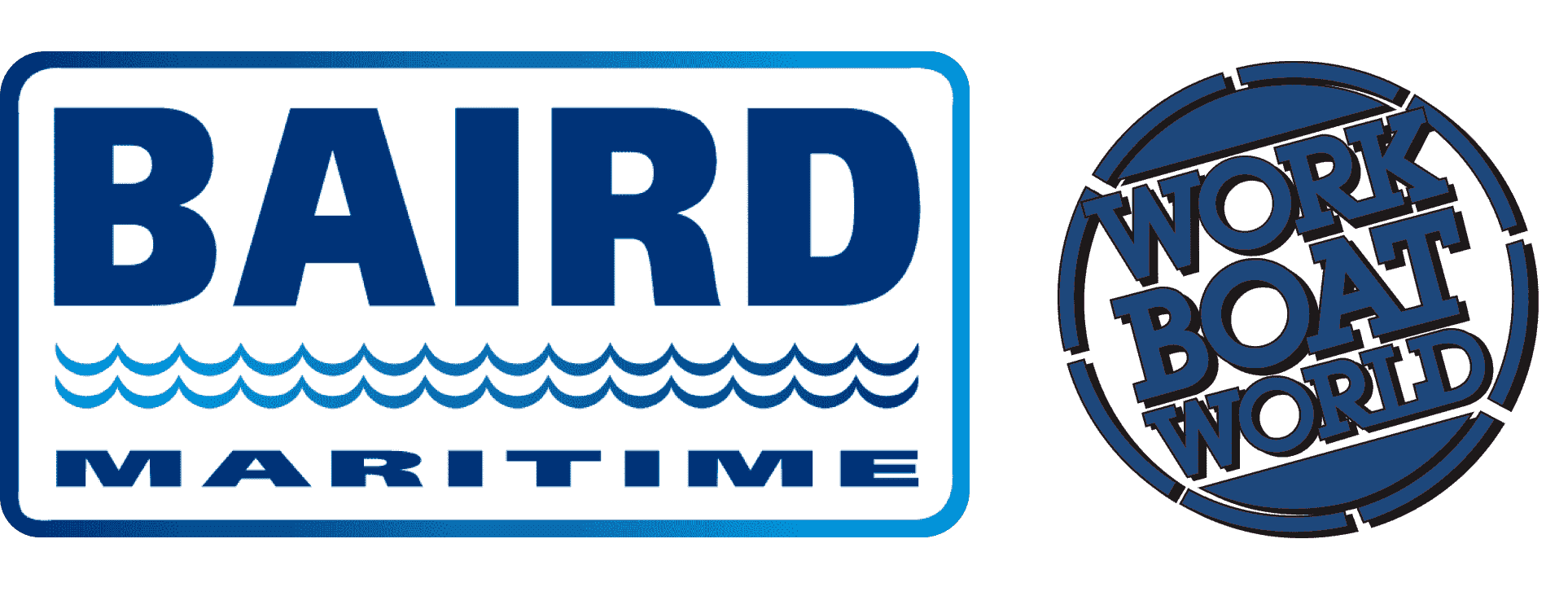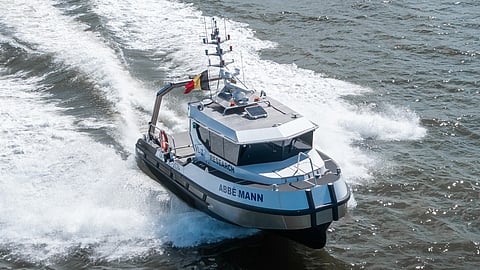VESSEL REVIEW | Abbé Mann – Coastal research workboat to operate in Belgian North Sea
The Flanders Marine Institute (Vlaams Instituut voor de Zee; VLIZ) of Belgium recently added a new workboat to its fleet of research vessels. The vessel has been named Abbé Mann after Theodore Augustine Mann, a famed English marine scientist from the 18th century.
A highly versatile research platform
The compact vessel will facilitate research on coastal defence and near-shore plastic pollution as its primary areas of focus. Secondary duties will include dive support and support for deployment of unmanned craft.
“We're a scientific institute, and we already have a research vessel 36 metres (120 feet) long and a smaller six-metre (20-foot) rigid inflatable boat (RIB),” Thomas Vandorpe, Marine Technician and Geophysicist at VLIZ, told Baird Maritime. “They were both in high demand, and we lacked sufficient ship time. With the new shore areas, we needed more ship time.”
VLIZ also needed flexibility, as when ship time was lost because of the weather, there was usually no backup because the institute’s 30-metre oceanographic vessel schedule is for one year. The new workboat can provide some backup to scientists whose campaigns have been cancelled due to bad weather.
"We also needed more ship time in near-shore areas," said Vandorpe. "Our RIB is six metres long, but there's no cover for the electronics from the rain, and the boat can only operate in 75 centimetres (2.5 feet) of waves."
VLIZ drafted a list of requirements that the new vessel needed to satisfy, which included four separate profiles. It needed to be able to undertake survey work, dive support, robotics support, and deployment and retrieval of equipment on the seafloor. A tender was then issued with those considerations and with the aim of filling the gap between the institute’s larger vessel and the RIB.
“The new vessel is unique in that it combines four profiles,” added Vandorpe. “It's multi-disciplinary and can do a lot of work for us. It's not restricted to just one type of research.”
Abbé Mann measures 11.1 metres (36.4 feet) long and has a draught of only 0.9 metre (three feet), allowing it to access both coastal and offshore waters in the Belgian sector of the North Sea. The vessel is powered by twin Yanmar petrol inboard engines that enable it to reach speeds of up to 20 knots even at full load, whereas the VLIZ 30-metre vessel was limited to 12 knots. Also fitted on the new workboat is an A-frame with a lifting capacity of 500 kg.
Multiple custom features for a range of research activities
"It also has a door made specifically for deploying divers," said Vandorpe. It's like a train door that goes forward and then slides sideways, which means the entire gap can be used by divers to deploy a special staircase. We also requested a moonpool with a custom plug, a stabiliser, and a seakeeper that will allow us to stay out at sea longer, but we designed the cabin ourselves."
The electronics suite includes an ECDIS, which Vandorpe said is usually not installed on small vessels, a radar, servers, and a GPS. The GPS is especially useful for scientists as it provides centimetre position navigation, which is ideal for surveys.
“We needed to have as much space as possible on such a small vessel because our AUV can be two to four metres (6.5 to 13 feet) long,” Vandorpe told Baird Maritime. “We have 4.5 metres (15 feet), which is quite large for such a small vessel. With the A-frame, we can easily deploy the AUV and retrieve traps from the seafloor. It's not all new, but the combination of everything makes the boat multi-purpose and really suitable for a scientific institute like ours.”
Abbé Mann was purchased by VLIZ with partial funding provided by the Flemish government. The vessel was delivered in March and is presently undergoing further refinements, particularly with regard to the onboard electronics. Vandorpe said he expects the boat will commence operational sailings in the summer of 2024, and VLIZ has already received numerous requests for charter.
“It’s slated for operation in Belgium’s entire exclusive economic zone,” said Vandorpe. “It can also operate in a portion of the waters of the Netherlands, particularly the Westerschelde estuary that leads to Antwerp.”


